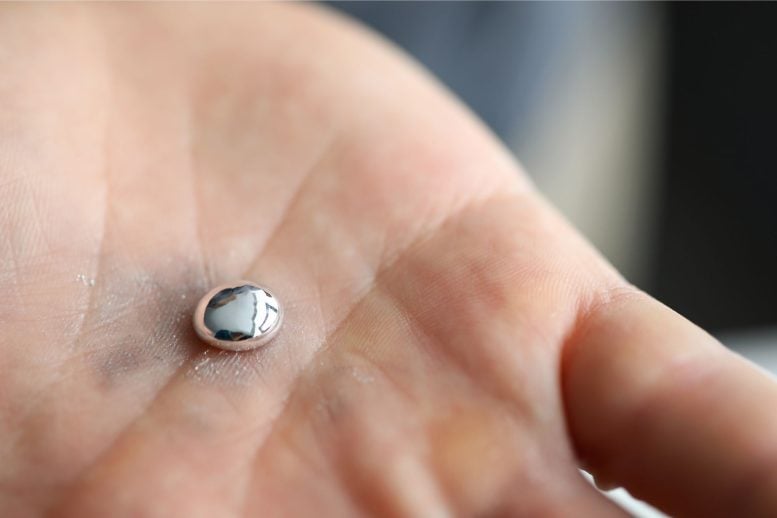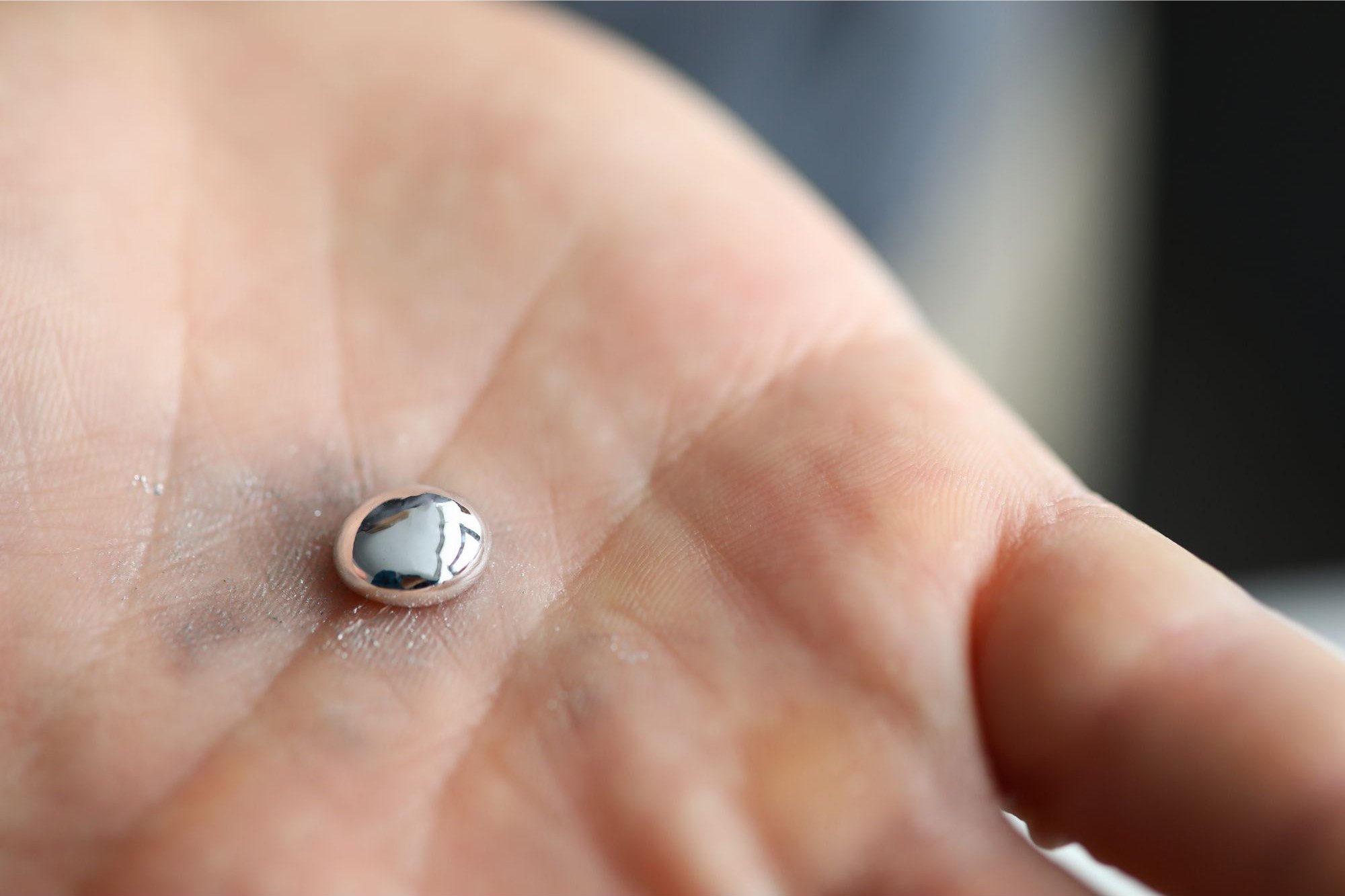
New research reveals aspects of structure and behavior at the atomic level.
Almost 150 years after its discovery and addition to the periodic table, gallium is still revealing its secrets. Scientists at the University of Auckland recently uncovered new aspects of the metal’s structure and behavior.
First discovered in 1875 by French chemist Paul-Émile Lecoq de Boisbaudran, gallium is known for its low melting point, so low that a spoonful of gallium can melt in a cup of tea. This unusual metal is also an important ingredient in the production of semiconductor.
The surprising discovery concerns the behavior of gallium at the atomic level.
Unlike most metals, gallium exists in the form of “dimers” – pairs of atoms – and is less dense as a solid than as a liquid, similar to how ice floats on water. Gallium has “covalent bonds” in which atoms share electrons, which is also unusual for a metal.
The new study shows that although these bonds disappear at the melting point, they reappear at higher temperatures.
This contradicts long-standing assumptions and requires a new explanation for gallium’s low melting point. The researchers suspect that the key may be a large increase in entropy – a measure of disorder – as the bonds disappear and the atoms are released.
Breakthrough in understanding gallium
“Thirty years of literature on the structure of liquid gallium is based on a fundamental assumption that is clearly not true,” says Professor Nicola Gaston of Waipapa Taumata Rau, University of Auckland and the MacDiarmid Institute for Advanced Materials and Nanotechnology.

The research was carried out by Dr Steph Lambie – now a postdoctoral fellow at the Max Planck Institute for Solid State Research in Germany – Gaston and Dr Krista Steenbergen of Victoria University of Wellington and the MacDiarmid Institute.
The breakthrough came from Lambie, then a doctoral student at the university and the MacDiarmid Institute. He carefully combed through the scientific literature from the past decades and compared temperature data to piece together the full picture.
Their results were recently published in the scientific journal Material horizons.
Applications and historical significance of gallium
Understanding the precise processes of gallium, and particularly its changes at high temperature, is important for advances in nanotechnology, in which scientists manipulate matter to create new materials.

The metal is used to dissolve other metals, facilitating the production of liquid metal catalysts and “self-assembling structures” in which disordered materials spontaneously assume a structure.
In an earlier project with Gaston, Lambie and Steenbergen, zinc “snowflakes” were produced by crystallizing zinc in liquid gallium.
Gallium was predicted before it was discovered. When Russian chemist Dmitri Mendeleev created the first periodic table in 1871, ordering the elements by increasing atomic number, he left gaps for missing elements suggested by known elements.
Gallium is extracted from minerals and rocks such as bauxite and does not occur in pure form in nature. The metal is used in semiconductors and is also used in telecommunications, LEDs and laser diodes, solar modules, high-performance computers, the aerospace and defense industries, and as an alternative to mercury in thermometers.
Interestingly, scientists are looking for traces of past life on Mars Gallium could provide clues by preserving traces of microbial life as a chemical “fingerprint.” Researchers from the university’s School of Environment and Te Ao Mārama – Centre for Fundamental Inquiry are currently investigating this.
Reference: “Resolving Decades of Debate: The Surprising Role of High-Temperature Covalency in the Structure of Liquid Gallium” by Stephanie Lambie, Krista G. Steenbergen and Nicola Gaston, June 24, 2024, Material horizons.
DOI: 10.1039/D4MH00244J

